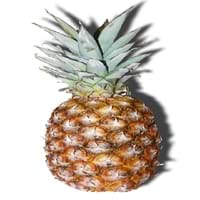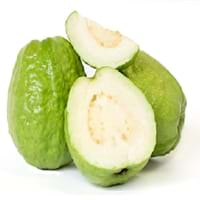Health Benefits
Asthma treatment, Bronchitis treatment, Cancer prevention, Heart care, Increases metabolic rate
Cancer prevention, Diarrhea treatment, Prevents constipation, Scurvy treatment, Treatment of dysentary
General Benefits
Anti-inflammatory properties, Controls blood pressure, Digestive aid, Eye care, Healing of wounds, Maintains healthy cholesterol level, Strengthens bones, Treatment of sinusitis, Treatment of common cold
Controls blood pressure, Cures cough, Improves eye vision, Maintains healthy cholesterol level, Treatment of common cold
Skin Benefits
Anti-aging benefits, Brightens and lightens complexion, Skin cleansing, Treatment of acne, Treatment of dark spots
Anti-aging benefits, Brightens and lightens complexion, Hydrates skin, Treatment of skin diseases
Hair Benefits
Prevents hair loss
Prevents hair loss
Allergy Symptoms
Abdominal pains, Itching in tongue and other parts of mouth, Sneezing, Swelling, Tingling sensation in wrist and face, Vomiting, Wheezing
Breathing difficulty, Coughing, Runny nose, Sneezing, Swelling of mouth, tongue or lips, Wheezing
Side Effects
Causes swollen mouth, Allergic reaction, Diarrhoea, Nausea, Skin rash, Vomiting
Hair thinning, Nail thinning, Skin problems, Tooth decay, Weakness, Possibly unsafe during pregnancy
Best Time to Eat
Best if taken as a breakfast (or empty stomach), As a snack in the late afternoon, Eat the fresh ones, avoid mixing with any other foods, don't eat after meal., Morning time (before lunch)
As a snack in the late afternoon, Don't consume at night and before bed, Eat the fresh ones, avoid mixing with any other foods, don't eat after meal., Morning time (before lunch)
Vitamin B5 (Pantothenic Acid)
Vitamin C (Ascorbic Acid)
Vitamin K (Phyllochinone)
Phytosterol
Not Available
Calories in Fresh Fruit with Peel
Not Available
Calories in Fresh Fruit without Peel
Not Available
Calories in Frozen Form
Not Available
Type
Berry, Tropical
Tree fruit, Tropical
Season
Autumn
All seasons
Varieties
Smooth Cayenne, Abacaxi, Red Spanish and Queen
Lucknow 49, Allahabad Safeda, Chittidar, Harijha, Apple guava, Hafshi, Arka Mridula and Allahabad Surkha
Color
Yellow
Green, Pink, Yellow
Inside Color
Yellow
White
Taste
Strong, Sweet, Tart
Sweet-Sour
Origin
Central America, South America
Central America, Mexico, South America
Grows on
Not Available
Trees
Soil Type
Clay, Sandy loam, Well-drained
Loam, Rocky, Sandy
Climatic Conditions
Hot, Sunny
Sunny
Facts about
- A single pineapple takes 3 years to reach maturation.
- Pineapple is not an apple, but is actually a berry.
- The name is with reference to its resemblance to pine cones.
- Pineapple is sweeter if scales are more.
- The black pigment in Guava leaves is used for textile applications.
- Guava leaves are used to make tea.
- Oils extracted from guava seeds are used in various cosmetics.
- Guava wood is used for decorative purposes.
Top Producer
Costa Rica
India
Other Countries
Brazil, India, Philippines, Thailand
China, Indonesia, Mexico, Nigeria, Pakistan, Philippines, Thailand
Top Importer
United States of America
Canada
Top Exporter
Costa Rica
India
Botanical Name
Ananas comosus
Psidium guajava
Synonym
Ananas sativus
Not Available
Subkingdom
Tracheobionta
Tracheobionta
Division
Magnoliophyta
Magnoliophyta
Class
Liliopsida
Magnoliopsida
Subclass
Commelinidae
Rosidae
Family
Bromeliaceae
Myrtaceae
Species
A. comosus
Psidium guajava
Generic Group
Pineapple
Myrtle
Difference Between Pineapple and Guava
We might think that Pineapple and Guava are similar with respect to nutritional value and health benefits. But the nutrient content of both fruits is different. Pineapple and Guava Facts such as their taste, shape, color, and size are also distinct. The difference between Pineapple and Guava is explained here.
The amount of calories in 100 gm of fresh Pineapple and Guava with peel is Not Available and 68.00 kcal and the amount of calories without peel is 50.00 kcal and Not Available respectively. Thus, Pineapple and Guava belong to Low Calorie Fruits and Low Calorie Fruits category.These fruits might or might not differ with respect to their scientific classification. The order of Pineapple and Guava is Poales and Myrtales respectively. Pineapple belongs to Bromeliaceae family and Guava belongs to Myrtaceae family. Pineapple belongs to Ananas genus of A. comosus species and Guava belongs to Psidium genus of Psidium guajava species. Beings plants, both fruits belong to Plantae Kingdom.









